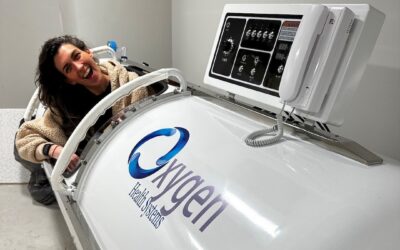Benign prostatic hyperplasia (BPH) is a condition that affects men as they age. About 50 percent of men between the ages of 51 and 60 have BPH, and that number jumps to 70 percent among men aged 60 to 69 and to around 80 percent of men over 70 years of age.
Signs of BPH
BPH symptoms can vary from frequency of urination at night, to a mild ache in the pelvic region, to a severe pain with sitting, urination, and sexual intercourse. Prostate enlargement from BPH occludes the urinary tract and forces the urine to back up in the bladder, creating a separate source of discomfort that comes from an overdistended bladder and a sensation of being unable to completely empty the bladder.
Causes of BPH
The incidence of BPH is increasing as the American population is becoming more sedentary, eating unhealthy food, and gaining weight. These habits cause increased inflammation, which in turn drives up blood cholesterol levels, creates a sex hormone imbalance, and causes insulin resistance.
All three of these disorders can independently stimulate prostate inflammation and enlargement.
BPH Treatment and Prevention
Adopting a healthy lifestyle is an essential part of both treatment and prevention of BPH.
To prevent BPH:
- Avoid excessive amounts of saturated fat, such as those found in red meat, fried foods, and dairy products.
- Replace vegetable oils with olive or canola oil for cooking.
- Consume omega-3-rich fats, which are found in cold-water fish, nuts, greens, and ground flaxseed.
- Consider light to moderate (one glass or less daily) alcohol consumption.
- Eat plenty of natural plants, particularly those rich in beta-sitosterol, such as green leafy vegetables, rice bran, wheat germ, peanuts, corn oils, nuts, and soybeans.
- Increase consumption of soy-based foods, such as soy milk, edamame, soy nuts, and tofu, to 1 to 2 ounces per day, and consider substituting soy milk for dairy milk.
- Avoid dietary supplements or environmental exposures, such as pesticides, herbicides, and recombinant bovine growth hormone (rBGH)-rich dairy products, that may increase circulating hormone levels.
- Avoid drugs that include dehydroepiandrosterone (DHEA), androstenedione, testosterone, and human growth hormone.
- Maintain appropriate weight, and perform regular aerobic exercise.
- Engage your doctor to help you manage metabolic syndrome with exercise, weight loss, and a low-glycemic index/load diet to reduce inflammation of the prostate
Remove specific exacerbating factors:
- Stop taking over-the-counter cold remedies or diet aids (phenylpropanolamine), nasal decongestants (pseudoephedrine), herbs (ma huang, ephedra), or caffeinated products that contain sympathomimetics, which increase prostatic muscle tone.
- Stop or minimize taking pharmaceutical products that have anticholinergic effects leading to urinary retention. These agents include antihistamines, bowel antispasmodics, bladder antispasmodics, tricyclic antidepressants, and antipsychotics.
Advanced Therapeutics
Deep-tissue radiofrequency (RF) hyperthermia is an advanced therapy for BPH that shows considerable success. Regional hyperthermia has been shown to be effective in treating a variety of conditions from cancer to chronic infections to regional inflammation. It has been shown to effectively treat BPH by reducing inflammation and shrinking the size of the prostate. Using hyperthermia to elevate the regional temperature to about 110°F has a powerful therapeutic effect that activates the immune system and dramatically increases local blood flow in and around the prostate. Over a series of such hyperthermia treatments, the prostate shrinks, and normal urinary function is restored for the patient.
At OWM Integrative Wellness, a unique, patented RF hyperthermia treatment by Thermofield is used to reverse signs of BPH. The treatment is conducted by the patient simply sitting on a RF-generating pad for 30 to 60 minutes. Such hyperthermia treatments are conducted every other week for three weeks followed by maintenance hyperthermia treatments performed every one to three months to maintain optimal urine flow.
Difference between RF Hyperthermia and Common Conventional Treatments
Pharmaceutical agents versus RF hyperthermia treatments. Alpha-reductase inhibitors and alpha-blockers are often used in combination to treat BPH. They work by blocking the action of 5-alpha reductase, which causes prostate enlargement, and by relaxing muscles in the prostate. However, many urologists believe these drugs are overprescribed and do not offer significant long-term benefits for patients. Recent studies indicate that patients taking these drugs are at greater risk of permanent sexual side effects (i.e., erectile dysfunction), a higher risk of lethal cancer, and an increased risk of diabetes.
Transurethral microwave thermotherapy (TUMT) versus Thermofield RF hyperthermia therapy.
While both procedures use heat to shrink or ablate the prostate, one procedure is far more pleasant for patients than the other. TUMT involves inserting a special microwave-emitting urinary catheter into the hyperplastic prostatic urethra. The microwave antenna within the catheter then emits microwaves to heat and destroy the surrounding prostate tissue. The procedure can take from 30 to 60 minutes and is generally well tolerated by patients. However, the procedure can cause considerable swelling and irritation of the prostate tissue in some patients. Urologists often insert a Foley catheter to prevent the patient from having urinary retention. After three to five days, the Foley catheter can be replaced by a temporary prostatic stent to improve voiding without exacerbating symptoms.
OWM’s Thermofield targeted prostate hyperthermia provides fast pain relief, reduction of inflammation, and improvement of urinary and sexual function without above listed medication related side effects, and discomfort and potential complications from invasive procedures.
For more information, call 716 626-6301 or request an appointment today.




